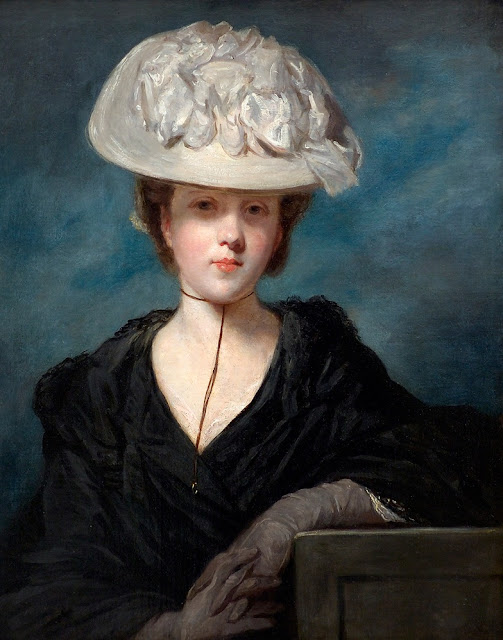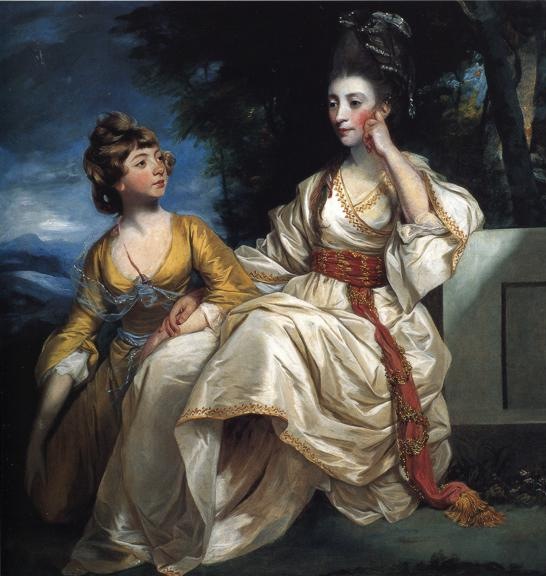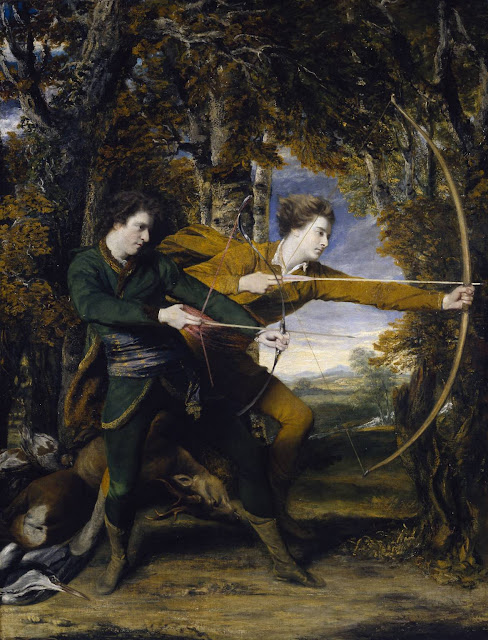 |
| Miss Mary Hickey, 1770 |
One of the side-paths leading off from John Singer Sargent (much seen this week on Spencer Alley) was Sir Joshua Reynolds (1723-1792). Reynolds occupied a position in the 18th century similar to Sargent's in the 19th – the most fashionable English portrait painter of the day. One portrait by Reynolds that I stumbled across with admiration (on my side-path) was that of Miss Mary Hickey, as seen above. But what I did not know at first was that I was looking at a photograph of the painting taken after a recent cleaning.
The main reason Reynolds had never much interested me in the past was the vaguely held notion that all his pictures were the color of gravy. I was thinking of an image like the version of Miss Hickey's portrait seen below. It displays the "Old Master patina" that was still frequently mentioned with reverence when I was a child. But that "patina" was in many cases primarily a long slow accumulation of air-borne dirt.
In recent decades much cleaning of many paintings has been done, while at the same time the various technologies for reproducing accurate color have hugely improved. In my own lifetime it has come as a general cultural revelation that the vast majority of European artists working over the past 700 years made use of intense color. My own grandparents would have been tremendously shocked to know this. And they would not have approved.
 |
| Miss Mary Hickey, 1770 |
 |
| Mary, Duchess of Richmond, 1767 |
 |
| Lady Mary Leslie, 1764 |
Surprisingly, the majority of Reynolds reproductions generally available online continue to be gravy-colored (like the two additional examples above).
The paintings below are works of Reynolds with the grime-layer removed. But even with the textured silks and satins newly visible, it is plain that Reynolds was never willing to let swash and flash predominate, as Sargent later did. At the same time, Reynolds delivered less sense than Sargent of the sitters' individual personalities.
"Ideal form" was what Reynolds said he wanted. In practice this meant restricting the poses in his work only to those he could appropriate from earlier painters.
-1778.jpg) |
| Mrs. Thrale and her daughter Hester (Queeney), 1778 |
 |
| Jane, Countess of Harrington, 1775 |
 |
| Mrs. Baldwin, 1782 |
 |
| Mrs. Trecothick in Turkish Masquerade Dress, 1771 |
 |
| Diana Sackville, 1782 |
 |
| The Archers (Double Portrait of Colonel Dyke and Lord Sydney), 1769 |
 |
| Three Ladies Adorning a Herm of Hymen (The Montgomery Sisters), 1773 |




-1778.jpg)





